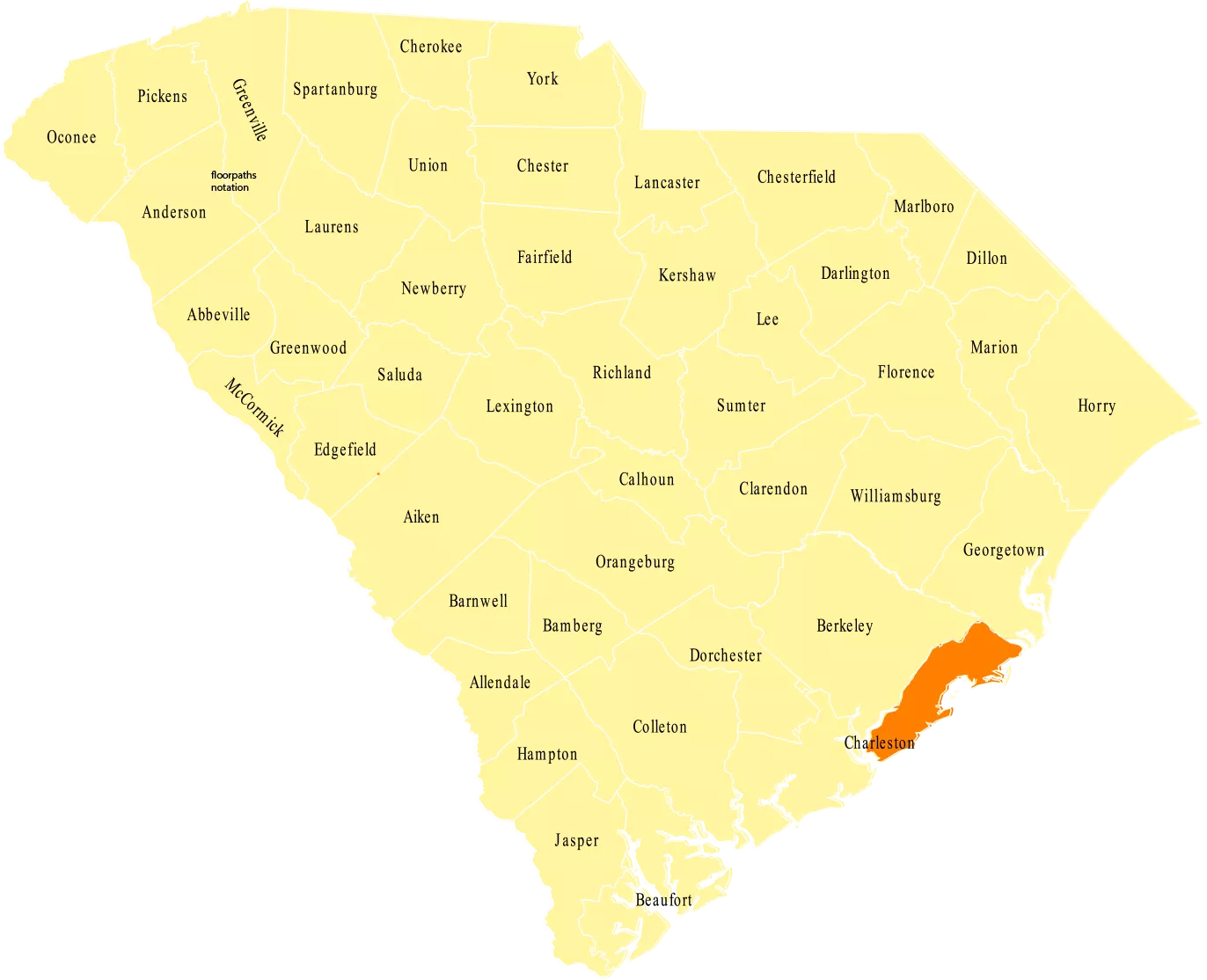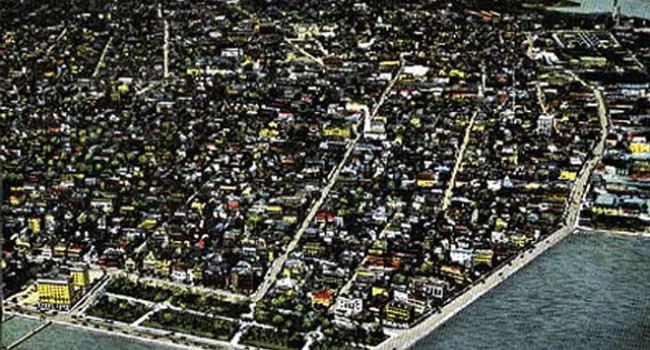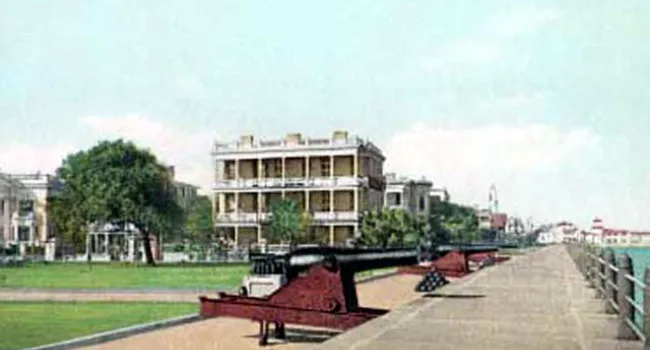
Photo
Main Street of Summerville, July 1906. Created by early planters as a refuge from the heat and disease of coastal plantations, Summerville was one of a number of early resorts built in the belt of...
“Charleston County and the city of Charleston, its county seat, are the most historic locations in the state.” Situated in the Lowcountry, the county serves as a popular vacation destination but also relies on the business that results from its port. The area in general serves as a large cultural and economic hub for the state.
Charleston County was founded as Charleston District in 1769, and the district became smaller after some of its lands were used to create Colleton and Berkeley counties. The county and its seat were named after King Charles II.
The city and county are saturated with Revolutionary War and Civil War history. Three signers of the United States Constitution and two famous abolitionists resided in Charleston County, and the Civil War began when soldiers fired shots from the county’s Fort Sumter.

Photo
Main Street of Summerville, July 1906. Created by early planters as a refuge from the heat and disease of coastal plantations, Summerville was one of a number of early resorts built in the belt of...
Photo
This aerial view of Fort Moultrie was taken in 1980 after the fort had become a National Park and was restored to show the evolution of Atlantic coast defense fortifications from the Revolutionary War...
Photo
Aerial view of the Folly Beach Atlantic Pavilion in the 1950s. Courtesy of the South Caroliniana Library.
Photo
Aerial view of the City of Charleston around 1940. Courtesy of the South Caroliniana Library.
Photo
The fall months are traditionally the season of heavy storms along the Carolina Coast. This photograph shows the damage to the Charleston Ferry wharf after a hurricane in 1911. Courtesy of the South...
Photo
St. Andrew's Parish on James Island was one of the early suburban development sites for an expanding 20th century Charleston. The new Ashley River Bridge, completed in 1926, led investors to lay out...
Photo
The Custom House of Charleston, viewed from the harbor in 1899. Begun in 1850 with Federal funds, intended as the crowning glory of Charleston's antebellum civic architecture, the classical revival...
Photo
King Street in Charleston, looking north around 1925. Courtesy of the South Caroliniana Library.
Photo
The promenade on the East Battery, Charleston, in 1910. Courtesy of the South Caroliniana Library.